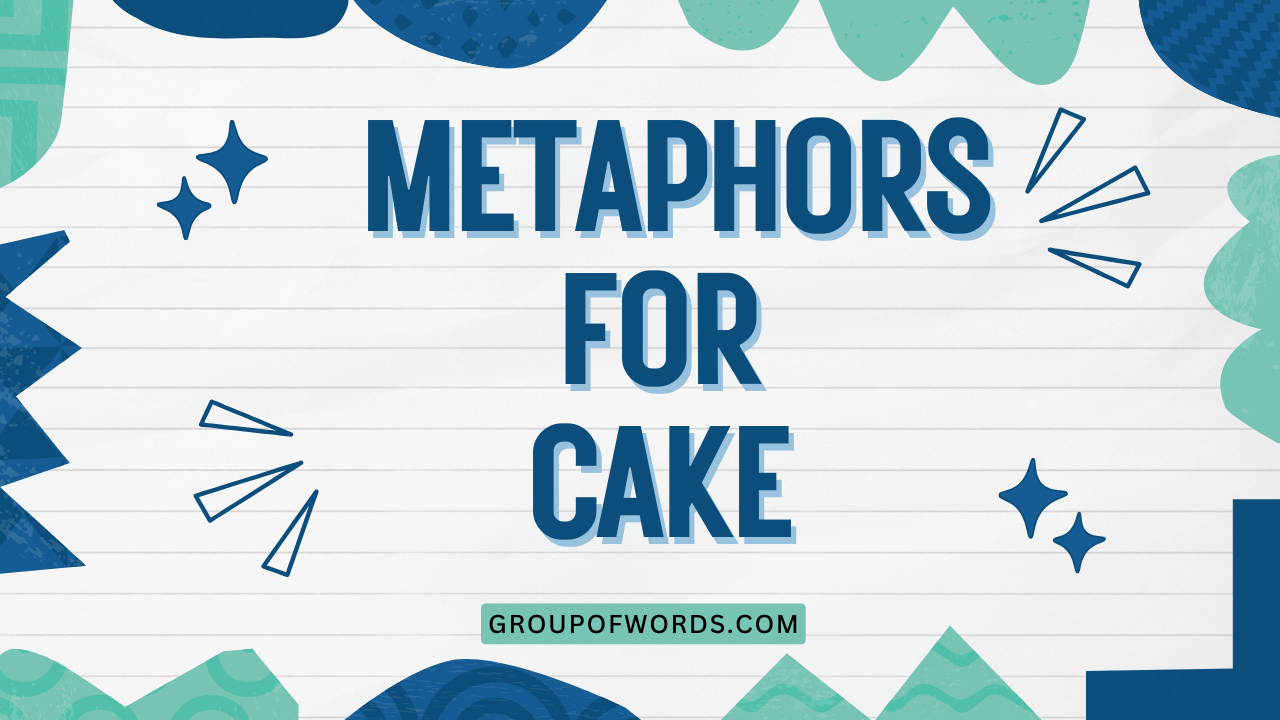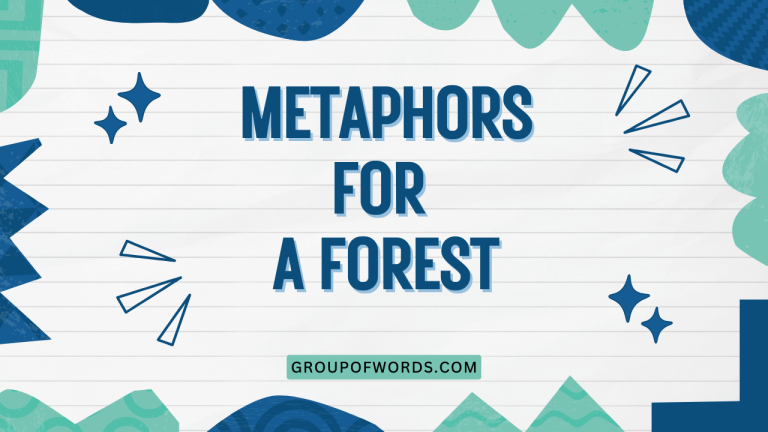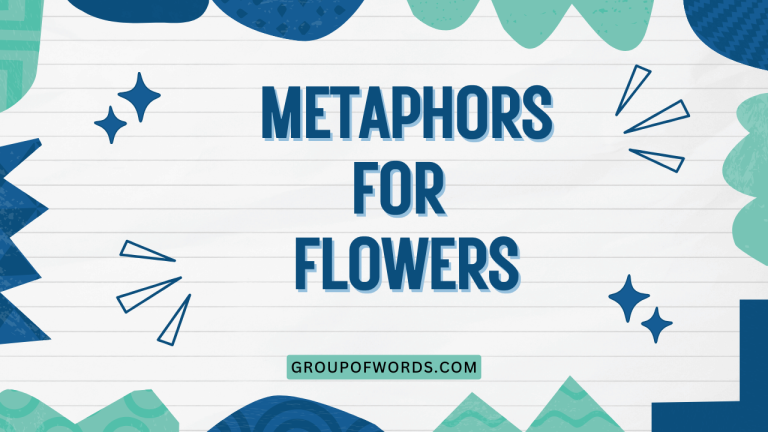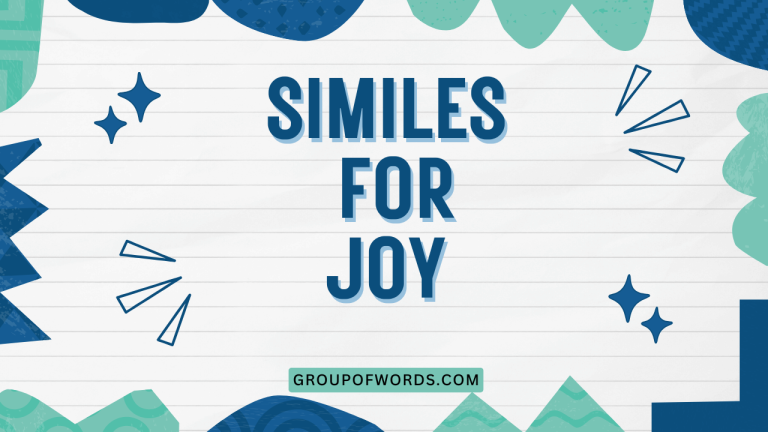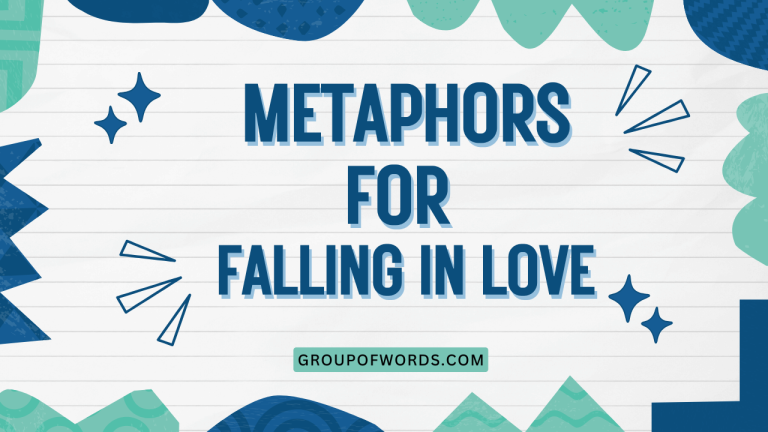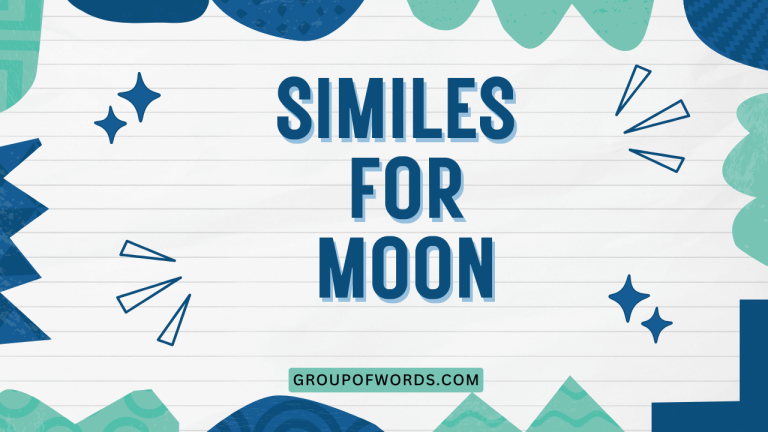Metaphors for Cake: A Sweet Guide to Figurative Language
Metaphors are powerful tools in the English language, allowing us to draw comparisons and create vivid imagery. While often associated with poetry and literature, metaphors are also prevalent in everyday conversation.
Understanding metaphors, especially those related to common subjects like cake, enhances our comprehension and expressive abilities. This article delves into the world of metaphors for cake, exploring their meanings, structures, and applications.
Whether you are an English language learner, a student of literature, or simply someone who enjoys the richness of language, this guide will provide you with a comprehensive understanding of this sweet topic.
Table of Contents
- Introduction
- Definition of Metaphor
- Structural Breakdown of Metaphors
- Types of Cake Metaphors
- Examples of Cake Metaphors
- Usage Rules for Metaphors
- Common Mistakes with Metaphors
- Practice Exercises
- Advanced Topics in Metaphorical Usage
- Frequently Asked Questions
- Conclusion
Definition of Metaphor
A metaphor is a figure of speech that directly compares two unlike things without using “like” or “as.” It asserts that one thing *is* another, creating a connection based on shared characteristics or qualities. Metaphors are used to add color, depth, and nuance to language, making it more engaging and memorable. They are essential for expressing abstract concepts and conveying emotions effectively. Understanding metaphors involves recognizing the implied comparison and interpreting the intended meaning.
Unlike similes, which use explicit comparison words like “like” or “as” (e.g., “He is as brave as a lion“), metaphors make a direct assertion (e.g., “He is a lion”). This directness gives metaphors a stronger impact and creates a more vivid image in the reader’s mind. The effectiveness of a metaphor depends on the audience’s ability to understand the connection between the two seemingly unrelated things being compared.
Metaphors function by transferring qualities from one thing (the source domain) to another (the target domain). For example, in the metaphor “Life is a journey,” the source domain is “journey,” and the target domain is “life.” The qualities associated with a journey, such as challenges, discoveries, and progress, are transferred to our understanding of life.
Structural Breakdown of Metaphors
Understanding the structure of a metaphor is crucial for both interpreting and creating them effectively. A metaphor typically consists of two main components: the tenor and the vehicle. The tenor is the subject being described, while the vehicle is the object or concept used to describe the tenor. The ground is the shared characteristic or similarity between the tenor and the vehicle.
Consider the metaphor “The cake was a ray of sunshine.” In this case:
- Tenor: The cake
- Vehicle: A ray of sunshine
- Ground: Brightness, warmth, and positivity
The effectiveness of a metaphor relies on the clarity and relevance of the ground. A strong metaphor creates a clear and compelling connection between the tenor and the vehicle, allowing the reader to easily grasp the intended meaning.
A weak or confusing metaphor, on the other hand, can hinder understanding and detract from the overall impact of the language.
Extended metaphors are metaphors that are sustained throughout a longer passage or even an entire work. They involve developing the initial comparison over multiple sentences or paragraphs, exploring different aspects of the relationship between the tenor and the vehicle.
Extended metaphors can be powerful tools for conveying complex ideas and creating a cohesive and engaging narrative.
Types of Cake Metaphors
Cake metaphors can be categorized based on the specific qualities of cake that are being used to describe other things. Here are some common types:
Metaphors of Sweetness and Delight
These metaphors use the inherent sweetness and deliciousness of cake to describe something pleasurable or enjoyable. They often evoke feelings of happiness, satisfaction, and indulgence.
Metaphors of Complexity and Layers
Cake, especially elaborate cakes, can be seen as complex creations with multiple layers and ingredients. These metaphors use this complexity to describe intricate situations, relationships, or ideas.
Metaphors of Celebration and Special Occasions
Cake is often associated with celebrations and special occasions. These metaphors draw on this association to describe moments of joy, achievement, or significance.
Metaphors of Indulgence and Temptation
Due to its rich and often decadent nature, cake can represent indulgence and temptation. These metaphors are used to describe situations or desires that are hard to resist.
Metaphors of Ease and Simplicity (or Lack Thereof)
Depending on the context, cake can also be used to describe something easy or simple (e.g., “a piece of cake”). Conversely, a poorly made or complicated cake could represent difficulty or failure.
Examples of Cake Metaphors
Here are some examples of cake metaphors, categorized by type, along with explanations of their meanings:
Examples of Metaphors of Sweetness and Delight
These metaphors use the deliciousness of cake to describe something enjoyable or pleasant.
| Metaphor | Meaning |
|---|---|
| “Her smile was a slice of chocolate cake.” | Her smile was incredibly sweet and delightful. |
| “The concert was a multi-layered cake of musical genius.” | The concert was full of musical talent, each element enriching the experience. |
| “The victory was the icing on the cake.” | The victory was the perfect final touch to an already successful situation. |
| “His kind words were a sweet cake to my soul.” | His words were comforting and uplifting. |
| “Their love was a delicious cake, baked with care.” | Their love was nurtured and full of sweetness. |
| “The vacation was a decadent chocolate cake of relaxation.” | The vacation was extremely relaxing and enjoyable. |
| “The new job was a layer of vanilla cake in her otherwise bland career.” | The new job added a sweet and enjoyable element to her career. |
| “The compliment was a bite of red velvet cake after a long day.” | The compliment was a welcome and delightful addition after a tiring day. |
| “The reunion was a frosted cake of cherished memories.” | The reunion was filled with sweet and treasured memories. |
| “Her laughter was a fluffy cake of pure joy.” | Her laughter was light, infectious, and filled with happiness. |
| “That song is a buttercream cake for my ears.” | That song is pleasing and delightful to listen to. |
| “The surprise party was a sweet cake of unexpected joy.” | The party was a delightful and unexpected source of happiness. |
| “Their friendship is a constant, delicious cake.” | Their friendship is always enjoyable and dependable. |
| “The award ceremony was a sugary cake of recognition.” | The ceremony was excessively focused on celebrating achievements. |
| “The sunny day felt like a lemon cake for the soul.” | The sunny day was refreshing and uplifting. |
| “The gift was a lovely cake of thoughtfulness.” | The gift was a considerate and delightful gesture. |
| “The experience was a delightful cake of new adventures.” | The experience was a series of pleasurable and new adventures. |
| “The success of the project was a sweet cake of teamwork.” | The project’s success was a delightful result of collaborative effort. |
| “The evening was a warm cake of good company.” | The evening was enjoyable due to the pleasant company. |
| “The positive feedback was a sweet cake for her confidence.” | The feedback boosted her confidence and made her feel good. |
| “The peaceful moment was a quiet slice of cake.” | The moment was a welcome break and brought joy. |
| “His art is a delicious cake made with passion.” | His art is enjoyable and created with great enthusiasm. |
| “Her singing voice is a sweet cake to the ears.” | Her singing voice is pleasant and delightful to listen to. |
Examples of Metaphors of Complexity and Layers
These metaphors use the layered structure of cake to describe complex situations or ideas.
| Metaphor | Meaning |
|---|---|
| “The political situation is a multi-layered cake of corruption.” | The political situation is complex and involves many interconnected instances of corruption. |
| “Their relationship is a complex cake, with layers of history and emotions.” | Their relationship is complicated and shaped by past experiences and feelings. |
| “The legal case was a many-layered cake, each layer revealing new complexities.” | The legal case was intricate and presented numerous challenges. |
| “The novel was a rich cake of interwoven storylines.” | The novel contained many interconnected and complex narratives. |
| “The corporate structure is a layered cake of bureaucracy.” | The corporate structure is complex and involves many levels of administrative procedures. |
| “The project’s challenges were like the many layers of a complicated cake.” | The project presented numerous interconnected difficulties. |
| “Understanding quantum physics is like dissecting a many-layered cake.” | Understanding quantum physics requires breaking down complex and interconnected principles. |
| “Her personality is a complex cake with layers of shyness and strength.” | Her personality is multifaceted, combining both introverted and resilient traits. |
| “The historical event was a layered cake of causes and effects.” | The event resulted from and led to numerous interconnected factors. |
| “The economic system is a multi-layered cake of interconnected industries.” | The economic system consists of various interrelated sectors. |
| “The software code was a complex cake of algorithms and functions.” | The software code involved many interconnected and intricate programming elements. |
| “The organization was structured like a mille-feuille cake, with many layers.” | The organization had many tiers and levels. |
| “The family history was like a rich cake filled with multiple generations.” | The family’s deep history was filled with stories from many generations. |
| “The social issue is a complex cake of cultural, economic, and political factors.” | The social issue involves many interconnected cultural, economic, and political elements. |
| “The scientific theory is a layered cake of hypotheses and experiments.” | The scientific theory is composed of many interconnected assumptions and tests. |
| “The company’s growth was like a cake with multiple layers of expansion.” | The company grew steadily in multiple phases. |
| “The mystery novel was a complex cake of clues and red herrings.” | The mystery novel contained many interconnected hints and misleading details. |
| “The urban landscape is a layered cake of architectural styles.” | The city’s scenery consists of many interconnected and varied building designs. |
| “The painting was a rich cake of colors and textures.” | The painting contained many vibrant and interconnected visual elements. |
| “The educational system is a multi-layered cake of curriculum and assessment.” | The educational system is made up of many interconnected teaching and evaluation methods. |
Examples of Metaphors of Celebration and Special Occasions
These metaphors use the association of cake with celebrations to describe joyful or significant events.
| Metaphor | Meaning |
|---|---|
| “The wedding was a beautiful cake of love and commitment.” | The wedding was a joyous celebration of love and commitment. |
| “Graduation day was the cake of her academic achievements.” | Graduation day was the culmination and celebration of her academic success. |
| “Their anniversary was a sweet cake of shared memories.” | Their anniversary was a delightful celebration of their history together. |
| “The team’s championship win was a celebratory cake for the entire city.” | The team’s victory was a joyous occasion for everyone in the city. |
| “The birth of their child was a sweet cake of new beginnings.” | The birth of their child was a joyful start to a new chapter in their lives. |
| “Retirement was the golden layer cake of relaxation and freedom.” | Retirement was a delightful period of rest and independence. |
| “The company’s milestone was a celebratory cake for the employees.” | The company’s significant achievement was a joyous occasion for the workforce. |
| “The family reunion was a sweet cake of togetherness and laughter.” | The family gathering was a delightful occasion filled with joy and unity. |
| “Her book launch was a celebratory cake of literary success.” | The launch of her book was a joyous event marking her achievement in writing. |
| “The groundbreaking ceremony was a sweet cake of future progress.” | The event was a joyous start to a new phase of development. |
| “The art exhibition was a celebratory cake of creativity and expression.” | The art exhibition was a delightful showcase of artistic skill and imagination. |
| “The festival was a sweet cake of cultural pride and community spirit.” | The festival was a joyful celebration of the community’s identity. |
| “Their engagement was a beautiful cake of promises and dreams.” | Their engagement was a joyous occasion signifying their shared aspirations. |
| “The surprise party was a celebratory cake of friendship and affection.” | The party was a joyful demonstration of camaraderie and caring. |
| “The charity event was a sweet cake of generosity and compassion.” | The event was a delightful display of kindness and support. |
| “The concert was a celebratory cake of musical talent and excitement.” | The concert was a joyful showcase of musical ability and enthusiasm. |
| “The new year’s celebration was a sweet cake of hope and anticipation.” | The celebration was a joyful start to a year filled with promise. |
| “The conference was a celebratory cake of knowledge and innovation.” | The conference was a delightful gathering of learning and new ideas. |
| “The theatrical performance was a sweet cake of artistry and storytelling.” | The performance was a joyful demonstration of skill and narrative. |
| “The community gathering was a celebratory cake of unity and support.” | The gathering was a delightful display of solidarity and assistance. |
Usage Rules for Metaphors
Using metaphors effectively requires understanding certain principles:
- Clarity: The connection between the tenor and the vehicle should be clear and understandable. Avoid obscure or confusing comparisons.
- Relevance: The shared characteristics (ground) should be relevant and significant to the intended meaning.
- Originality: While common metaphors can be effective, original metaphors can be more impactful and memorable.
- Context: Consider the context and audience when using metaphors. What might be clear to one audience may be confusing to another.
- Consistency: Avoid mixing metaphors, which can create confusion and undermine the effectiveness of your language.
Mixing metaphors occurs when you combine two or more metaphors that create conflicting or nonsensical images. For example, “He was skating on thin ice while burning the candle at both ends” combines the metaphor of being in a precarious situation with the metaphor of overworking oneself, creating a confusing and illogical image.
Common Mistakes with Metaphors
Here are some common mistakes to avoid when using metaphors:
| Mistake | Incorrect Example | Correct Example |
|---|---|---|
| Mixing metaphors | “She was a fish out of water, but she hit the ground running.” | “She was a fish out of water, struggling to adapt.” OR “She hit the ground running, quickly adapting to the new situation.” |
| Using clichéd metaphors | “Life is a highway.” | “Life is a challenging climb, filled with unexpected vistas.” |
| Creating unclear comparisons | “The meeting was a cake.” | “The meeting was a sweet cake, full of enjoyable discussions.” |
| Using culturally inappropriate metaphors | (Using a cake metaphor that is offensive in a specific culture) | (Research and choose metaphors appropriate for the target audience) |
| Overusing metaphors | (A paragraph filled with too many metaphors, making the writing feel forced and unnatural) | Use metaphors sparingly, only when they add significant value to the writing. |
| Inconsistent metaphor usage | “The project was a piece of cake, but it was also a mountain to climb.” | “The project was initially a piece of cake, but unforeseen challenges turned it into a mountain to climb.” |
Practice Exercises
Test your understanding of cake metaphors with these exercises:
Exercise 1: Identifying Metaphors
Identify the metaphors in the following sentences and explain their meanings.
| Question | Answer |
|---|---|
| 1. “His speech was a dry cake, lacking any flavor.” | Metaphor: “Dry cake.” Meaning: His speech was uninteresting and dull. |
| 2. “The promotion was the icing on the cake after years of hard work.” | Metaphor: “Icing on the cake.” Meaning: The promotion was a welcome addition to his already successful career. |
| 3. “Their marriage was a complicated cake, with layers of love and resentment.” | Metaphor: “Complicated cake.” Meaning: Their marriage was complex and involved both positive and negative emotions. |
| 4. “The victory was a sweet cake, well deserved after the long struggle.” | Metaphor: “Sweet cake.” Meaning: The victory was delightful and well-earned. |
| 5. “Her performance was a half-baked cake, not fully realized.” | Metaphor: “Half-baked cake.” Meaning: Her performance was incomplete and lacked polish. |
| 6. “The opportunity was a cake on a silver platter.” | Metaphor: “Cake on a silver platter.” Meaning: The opportunity was presented easily and conveniently. |
| 7. “The investigation was a layered cake of deceit and lies.” | Metaphor: “Layered cake.” Meaning: The investigation involved multiple layers of deception. |
| 8. “Her new job was a piece of cake compared to her old one.” | Metaphor: “Piece of cake.” Meaning: Her new job was easy and simple. |
| 9. “The experience was a rich chocolate cake for the senses.” | Metaphor: “Rich chocolate cake.” Meaning: The experience was intensely pleasurable and stimulating. |
| 10. “The project’s failure was a sour cake on their reputation.” | Metaphor: “Sour cake.” Meaning: The project’s failure negatively impacted their reputation. |
Exercise 2: Creating Metaphors
Create metaphors using “cake” to describe the following situations:
| Situation | Possible Metaphor |
|---|---|
| 1. A difficult challenge | The challenge was a dense fruitcake, packed with obstacles. |
| 2. A joyful celebration | The party was a festive cake, filled with laughter and cheer. |
| 3. A complex problem | The problem was a multi-tiered cake of interconnected issues. |
| 4. A simple task | The task was a piece of cake, easily accomplished. |
| 5. A rewarding experience | The experience was a sweet cake, leaving a lasting impression. |
| 6. A disappointing outcome | The outcome was a burnt cake, a complete failure. |
| 7. A surprising event | The surprise was a pop-up cake, unexpected and delightful. |
| 8. A long-lasting friendship | Their friendship was a well-baked cake, enduring through time. |
| 9. A stressful situation | The situation was a collapsing cake, chaotic and overwhelming. |
| 10. A creative endeavor | The project was an artistic cake, a unique and flavorful creation. |
Exercise 3: Identifying Tenor, Vehicle, and Ground
For each cake metaphor, identify the tenor, vehicle, and ground.
| Metaphor | Tenor | Vehicle | Ground |
|---|---|---|---|
| “Her voice was a sweet cake to the ears.” | Her voice | Sweet cake | Pleasantness, delightfulness |
| “The project was a layered cake of complexities.” | The project | Layered cake | Intricacy, multiple components |
| “The celebration was a festive cake of joy.” | The celebration | Festive cake | Happiness, festivity |
| “The task was a piece of cake.” | The task | Piece of cake | Ease, simplicity |
| “The experience was a rich cake for the soul.” | The experience | Rich cake | Nourishment, satisfaction |
| “The failure was a burnt cake of disappointment.” | The failure | Burnt cake | Disappointment, ruin |
| “Their love was a frosted cake of affection.” | Their love | Frosted cake | Sweetness, affection |
| “The challenge was a dense cake of obstacles.” | The challenge | Dense cake | Difficulties, obstacles |
| “The victory was a sweet cake of triumph.” | The victory | Sweet cake | Delight, triumph |
| “The meeting was a bland cake of formalities.” | The meeting | Bland cake | Boring, uninteresting |
Advanced Topics in Metaphorical Usage
For advanced learners, exploring the philosophical and psychological aspects of metaphors can be enriching. Conceptual metaphor theory, for example, proposes that our understanding of abstract concepts is fundamentally based on metaphors.
This theory, developed by George Lakoff and Mark Johnson, suggests that metaphors are not just linguistic devices but also cognitive structures that shape our thinking and perception.
Analyzing the historical and cultural context of metaphors can also provide deeper insights into their meanings and significance. Metaphors can evolve over time, and their interpretations can vary across different cultures.
Understanding these nuances is essential for effective communication and avoiding misinterpretations.
Moreover, exploring the use of metaphors in different genres and disciplines can reveal their versatility and power. From literature and poetry to science and business, metaphors play a crucial role in shaping our understanding of the world around us.
Frequently Asked Questions
- What is the difference between a metaphor and a simile?
A metaphor directly compares two unlike things, stating that one thing *is* another (e.g., “He is a lion”). A simile, on the other hand, uses “like” or “as” to make a comparison (e.g., “He is as brave as a lion”). Metaphors are more direct and create a stronger sense of identification, while similes are more explicit and less assertive.
- How can I improve my ability to understand metaphors?
Read widely and pay attention to the language used by writers and speakers. Consider the context in which the metaphor is used and try to identify the shared characteristics between the tenor and the vehicle. Practice identifying metaphors in different texts and explaining their meanings. Additionally, exposing yourself to diverse cultural and literary sources can broaden your understanding of metaphorical expressions.
- How can I create more effective metaphors?
Focus on creating clear and relevant comparisons. Choose vehicles that have strong associations and resonate with your audience. Avoid clichés and strive for originality. Consider the emotional impact of your metaphors and use them to evoke specific feelings or create vivid images. Before finalizing a metaphor, test it on others to ensure it is easily understood and achieves the intended effect.
- What is a dead metaphor?
A dead metaphor is a metaphor that has become so overused that it has lost its figurative meaning and is now used as a literal expression. Examples include “leg of a table” or “head of the class.” While these phrases originated as metaphors, they are now considered standard vocabulary and no longer evoke a sense of comparison.
- What is an extended metaphor?
An extended metaphor is a metaphor that is developed over several lines or throughout an entire work. It involves expanding on the initial comparison and exploring different aspects of the relationship between the tenor and the vehicle. Extended metaphors can be powerful tools for conveying complex ideas and creating a cohesive and engaging narrative.
- Why are metaphors important in language?
Metaphors add depth, color, and nuance to language. They allow us to express abstract concepts in concrete terms, making them more accessible and memorable. Metaphors also enhance our ability to communicate emotions and create vivid imagery, making our language more engaging and persuasive. Furthermore, they play a crucial role in shaping our understanding of the world by influencing how we perceive and interpret experiences.
- Can a metaphor be misinterpreted?
Yes, metaphors can be misinterpreted if the audience does not understand the intended connection between the tenor and the vehicle. Cultural differences, lack of context, or unclear comparisons can lead to misinterpretations. To minimize the risk of misinterpretation, it is important to choose metaphors that are appropriate for the target audience and provide sufficient context to clarify the intended meaning.
- How do metaphors differ across cultures?
Metaphors are often rooted in cultural experiences and beliefs, which means that their meanings can vary significantly across different cultures. A metaphor that is clear and effective in one culture may be confusing or even offensive in another. When communicating across cultures, it is important to be aware of these differences and to choose metaphors that are culturally appropriate and easily understood.
Conclusion
Metaphors are a vital part of the English language, enriching our communication and understanding. By exploring metaphors for cake, we gain insights into how figurative language works and how it can be used to create vivid and meaningful expressions.
Understanding the different types of cake metaphors, their structures, and usage rules empowers us to both interpret and create compelling language.
Remember, the key to using metaphors effectively is clarity, relevance, and originality. Avoid clichés, be mindful of your audience, and strive to create comparisons that resonate with their experiences and understanding.
With practice and attention to detail, you can master the art of metaphorical expression and enhance the impact of your communication. Keep experimenting with different metaphors and exploring the rich possibilities of figurative language.
By embracing the power of metaphors, you can transform your writing and speaking, making it more engaging, memorable, and impactful.
